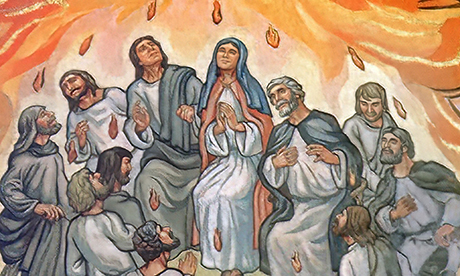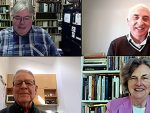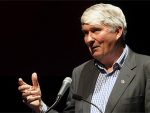While attending a Holy See press conference about nine or ten years ago, I pointed out to the officials who were unveiling a new document that a number of things in the text did not appear to be in line with the teaching of the Second Vatican Council (1962-65).
Immediately, some of the younger colleagues in the press corps began to murmur and one of them groaned just loud enough for at least some of us to hear, “O god, here we go again… the Council.”
The incident sprang to mind this past week while reading some of the negative remarks about Vatican II that have shown up in the press and on social media to coincide with the 60th anniversary of the Council’s opening on October 11, 1962.
Disparaging Vatican II is not today the hobby it had become during the previous pontificate when the ultra-traditionalist critics of the Council were able to gain greater prominence and influence in Rome and many parts of the Church around the world.
And that is thanks to Pope Francis.
The first pope ordained a priest after the Council
“I think his great contribution to date has been the reconnecting of the Church with the energy of the Second Vatican Council,” Cardinal Donald Wuerl told America back in February 2017, just a few weeks before the fourth anniversary of Francis’ election to the papacy.
The Argentine Jesuit, who is the first Roman Pontiff to be ordained a priest after Vatican II, took up the papal ministry at a time when it was not fashionable to speak positively of the Council as anything more than an event that had come and gone.
His predecessor, Benedict XVI, had perhaps unwittingly helped fuel a so-called “reform of the (liturgical) reform” movement by granting permission for the near-unlimited celebration — and the active promotion — of the pre-Vatican II liturgy.
Francis has, since, all but pulled the plug on that.
As Paul VI foresaw at the very beginning of the post-Conciliar period, refusal to fully accept the reformed liturgy would be just the beginning of calling into question many other aspects of Vatican II, even the entire Council.
How did we ever get disconnected from the “energy” of Vatican II, which Cardinal Wuerl talks about, in the first place?
The end of “silly season” or a clampdown on reform?
It did not happen during Paul VI’s pontificate or in the first couple years after John Paul II’s election. But as the Polish pope’s nearly 27-year-long pontificate gathered pace, he and the people he brought to work in the Roman Curia began a determined effort to impose a particularly circumscribed vision of what Vatican II meant and how it was to be implemented.
Some cheered this as an end to “silly season” — as Kathleen Kaveny reminded us this week — and as a rescue mission to bring the drifting Barque of Peter safely back to port.
Others bemoaned it as an iron-fisted clampdown on the Council’s spirit of renewal and reform. Conformity and obedience to Rome became the operating model and those who did not get into line — clerics and theologians, especially — were censured or removed.
Anyone who dared to evoke the “spirit of Vatican II”, which had been considered the interpretive key of what happened and was decided at the Council in the initial years of the post-conciliar period, was mercilessly derided.
John Paul’s “restoration” project, as many of his “dissenters” called it, was all but complete by the time the charismatic pope died in 2005 and Joseph Ratzinger, the soft-spoken theologian who had constructed the doctrinal backbone of his long pontificate, took John Paul’s place on the Chair of Peter as Pope Benedict.
The “reform of the reform” crowd becomes the tail wagging the dog
A new hermeneutical key quickly emerged, solidifying the thesis that the meaning of Vatican II could only be found in the official documents it issued, and concluding with the assertion that the texts presented a “reform in continuity” with all that happened before the Council.
But the “reform of the reform” crowd hijacked this interpretive key and took it a step further, claiming a “hermeneutic of continuity” that justified the recovery and return of anything from the Church’s past, even that which had been reformed in the wake of the Council.
During Benedict’s eight-year pontificate proponents of this “reform of the reform” movement — even though they were then and remain now a small minority in the global Church — ascended to top Vatican jobs and were promoted to major dioceses around the world.
It is no exaggeration to say that they became that tail that was wagging the dog.
Synodality and the laity
The tail has not been severed.
It remains, since many of these men are bishops or cardinals who still hold key positions and can continue to exercise an oversized influence in the Church.
Generally not in line with Francis’ vision of reform, most of these hierarchs are quietly and carefully biding their time.
The 85-year-old pope is very much aware of this. And that is one of the reasons he has been so focused — almost to the point of obsession — on trying to implement synodality at every level of the Church.
He surely knows that making Catholic lay people a constitutive part of the Church’s decision-making processes is a way to counter the influence of the “reform of the reform” minority.
And if that happens it will also help ensure that the Church is not once again disconnected from the energy — indeed, the spirit — of the Second Vatican Council.
- Robert Mickens is LCI Editor in Chief.
- First published in La-Croix International. Republished with permission.
News category: Analysis and Comment.




